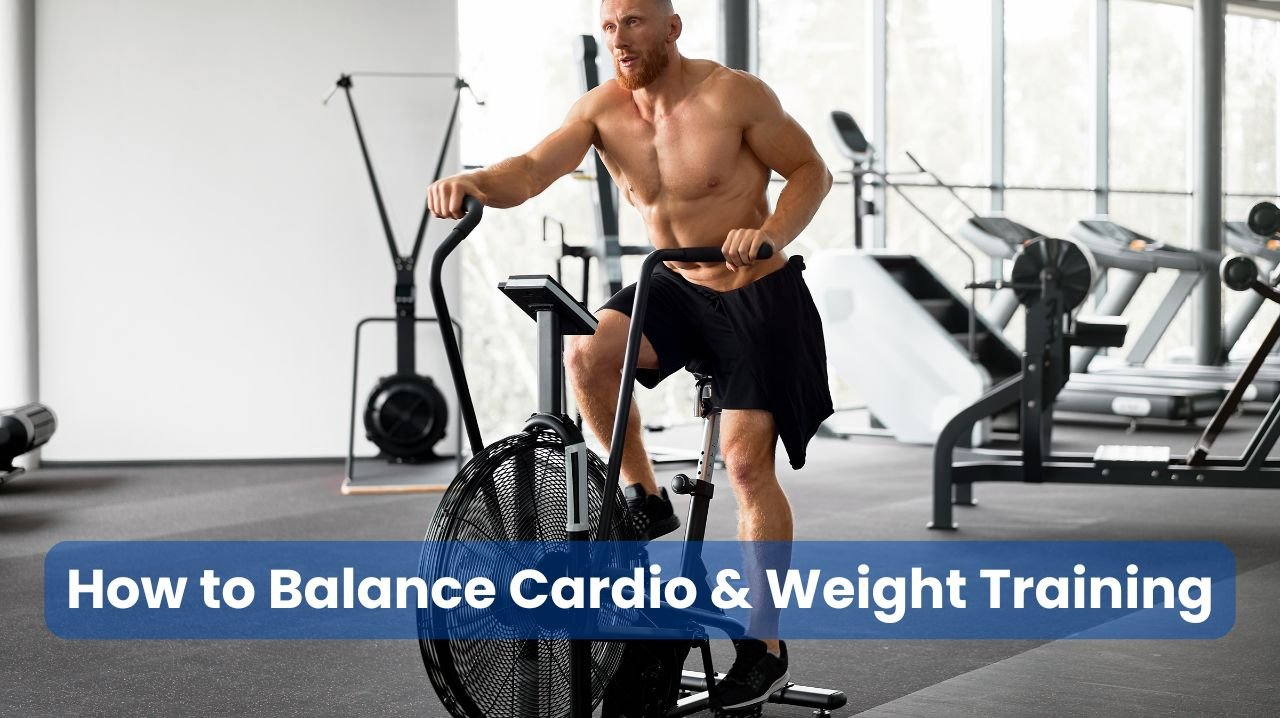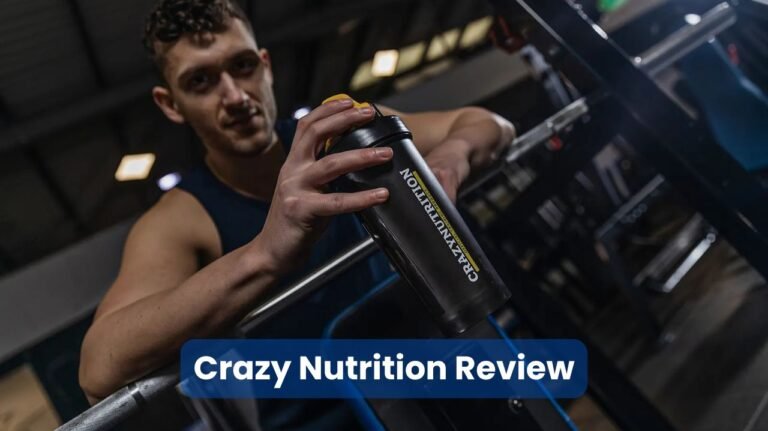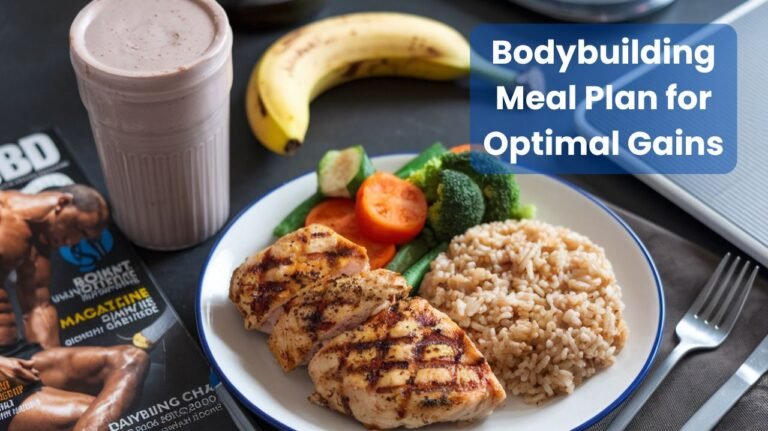How to Balance Cardio and Weight Training for Bodybuilders
Bodybuilders face a unique challenge when it comes to optimizing their fitness routines. While their primary goal is to build muscle mass and sculpt their physiques, they also need to maintain cardiovascular health and manage body fat levels.
This delicate balance between cardio and weight training is crucial for achieving the best results in bodybuilding. In this comprehensive guide, we’ll explore how bodybuilders can effectively combine these two types of exercise to maximize their gains and overall fitness.
👉 Boost in Focus and Energy to Help Increase Pumps and Performance
👉 Increase Gains, Promote Muscle Growth and Boost Energy
👉 Powerful Muscle Growth, Increased Blood Flow, and Enhanced Pumps
👉 Bulk-Up, Increase Gains, And Improve Recovery
Understanding the Importance of Both Cardio and Weight Training
Before diving into the specifics of balancing these two forms of exercise, it’s essential to understand why both are important for bodybuilders:
Benefits of Weight Training:
- Builds muscle mass and strength
- Increases bone density
- Boosts metabolism
- Improves overall body composition
- Enhances athletic performance
Benefits of Cardio:
- Improves cardiovascular health
- Aids in fat loss and weight management
- Enhances endurance and stamina
- Reduces the risk of heart disease and other health issues
- Improves recovery between weight training sessions
By incorporating both types of exercise into their routines, bodybuilders can reap the benefits of each while working towards their specific goals.
Finding the Right Balance: Factors to Consider
Achieving the optimal balance between cardio and weight training depends on several factors:
1. Individual Goals
The primary consideration when balancing cardio and weight training is the bodybuilder’s specific goals. Those focusing on muscle gain may need to limit cardio to prevent interference with muscle growth, while those aiming for fat loss might increase their cardio sessions.
2. Current Fitness Level
Beginners may need to start with a more balanced approach, gradually increasing the intensity and duration of both cardio and weight training as their fitness improves.
3. Body Type and Metabolism
Some individuals naturally have a higher metabolism and may require less cardio to maintain their desired body composition. Others may need to incorporate more cardio to achieve similar results.
4. Training Phase
Bodybuilders often cycle through different training phases, such as bulking and cutting. The balance between cardio and weight training should be adjusted accordingly during each phase.
5. Time Constraints
Realistically, most people have limited time for exercise. Bodybuilders need to consider how to best allocate their available time between cardio and weight training to achieve their goals.
Strategies for Balancing Cardio and Weight Training
With these factors in mind, here are some effective strategies for bodybuilders to balance their cardio and weight training routines:
1. Prioritize Weight Training
For most bodybuilders, weight training should be the primary focus. A typical routine might include:
- 4-5 weight training sessions per week
- Each session lasting 45-90 minutes
- Focusing on compound exercises for major muscle groups
- Incorporating progressive overload to continually challenge the muscles
2. Incorporate Strategic Cardio
Cardio can be added to the routine in several ways:
- 2-3 cardio sessions per week, lasting 20-30 minutes each
- Performing cardio on rest days or after weight training sessions
- Using a mix of high-intensity interval training (HIIT) and steady-state cardio
3. Use Cardio for Active Recovery
Low-intensity cardio can be an excellent tool for active recovery between weight training sessions. This might include:
- Light jogging or brisk walking
- Swimming
- Cycling at a moderate pace
These activities can help improve blood flow, reduce muscle soreness, and enhance overall recovery without significantly impacting muscle growth.
4. Adjust Cardio Based on Training Phase
During bulking phases, cardio can be reduced to:
- 1-2 sessions per week
- 15-20 minutes per session
- Focus on maintaining cardiovascular health rather than burning calories
During cutting phases, cardio can be increased to:
- 3-4 sessions per week
- 30-45 minutes per session
- Emphasis on higher intensity to maximize fat burning
5. Experiment with Timing
The timing of cardio sessions can impact their effectiveness and potential interference with muscle growth. Options include:
- Fasted morning cardio for fat burning
- Post-workout cardio for maximizing calorie burn
- Separate cardio sessions on rest days to avoid interference with weight training
Sample Weekly Routine for Balancing Cardio and Weight Training
Here’s an example of how a bodybuilder might structure their week to balance cardio and weight training:
| Day | Weight Training | Cardio |
|---|---|---|
| Monday | Chest and Triceps (60 min) | 20 min HIIT post-workout |
| Tuesday | Back and Biceps (60 min) | – |
| Wednesday | Legs (75 min) | – |
| Thursday | Rest | 30 min steady-state cardio |
| Friday | Shoulders and Arms (60 min) | 15 min HIIT post-workout |
| Saturday | Full Body (90 min) | – |
| Sunday | Rest | 45 min low-intensity cardio |
This routine provides a balance of weight training and cardio while allowing for adequate rest and recovery.
Monitoring Progress and Making Adjustments
To ensure that the balance between cardio and weight training is effective, bodybuilders should regularly monitor their progress and make adjustments as needed. Key indicators to track include:
- Body weight and composition
- Strength gains
- Muscle growth and definition
- Energy levels and recovery time
- Overall cardiovascular fitness
If progress stalls or goals aren’t being met, bodybuilders can make adjustments such as:
- Increasing or decreasing cardio frequency and duration
- Modifying the intensity of cardio sessions
- Adjusting the timing of cardio in relation to weight training
- Reassessing nutritional intake to support both muscle growth and cardiovascular health
Common Mistakes to Avoid
When attempting to balance cardio and weight training, bodybuilders should be aware of these common pitfalls:
1. Overemphasis on Cardio
Doing too much cardio can interfere with muscle growth and recovery. Bodybuilders should be cautious not to exceed the recommended amount of cardio for their specific goals.
2. Neglecting Cardio Entirely
While weight training is crucial for bodybuilding, completely avoiding cardio can lead to poor cardiovascular health and make it harder to manage body fat levels.
3. Performing High-Intensity Cardio Before Weight Training
This can lead to fatigue and reduced performance during weight training sessions. It’s generally better to do cardio after weights or on separate days.
4. Failing to Adjust Nutrition
Adding cardio to a bodybuilding routine increases calorie expenditure. Bodybuilders need to ensure they’re consuming enough calories and nutrients to support both muscle growth and cardiovascular exercise.
5. Not Allowing for Adequate Recovery
Balancing cardio and weight training requires careful consideration of recovery time. Overtraining can lead to burnout, increased injury risk, and impaired progress.
The Role of Nutrition in Balancing Cardio and Weight Training
Proper nutrition is crucial for bodybuilders looking to balance cardio and weight training effectively. Key considerations include:
- Calorie intake: Ensuring sufficient energy for both types of exercise while supporting muscle growth or fat loss goals
- Macronutrient balance: Adjusting protein, carbohydrate, and fat intake based on training demands
- Meal timing: Optimizing pre- and post-workout nutrition for both cardio and weight training sessions
- Hydration: Maintaining proper fluid balance to support performance in both types of exercise
Bodybuilders should consult with a nutritionist or dietitian to develop a personalized nutrition plan that complements their balanced exercise routine.
👉 Pack On Muscle Mass and Get Bigger and Stronger
👉 Burn Fat and Get Seriously Ripped
👉 Get Explosive Strength and Maximum Stamina
👉 Become A Gym Beast With Legal SARMs Alternatives
Conclusion
Balancing cardio and weight training is a crucial skill for bodybuilders to master. By understanding the importance of both types of exercise, considering individual factors, and implementing strategic approaches, bodybuilders can create a well-rounded routine that supports their goals.
Regular monitoring and adjustment of the balance between cardio and weight training, along with proper nutrition and recovery, will help bodybuilders achieve optimal results in their fitness journey.
Remember, there’s no one-size-fits-all approach to balancing cardio and weight training. Each bodybuilder must find the right balance that works for their unique body, goals, and lifestyle. With patience, consistency, and a willingness to experiment, bodybuilders can unlock their full potential and achieve the physique they desire while maintaining overall health and fitness.







